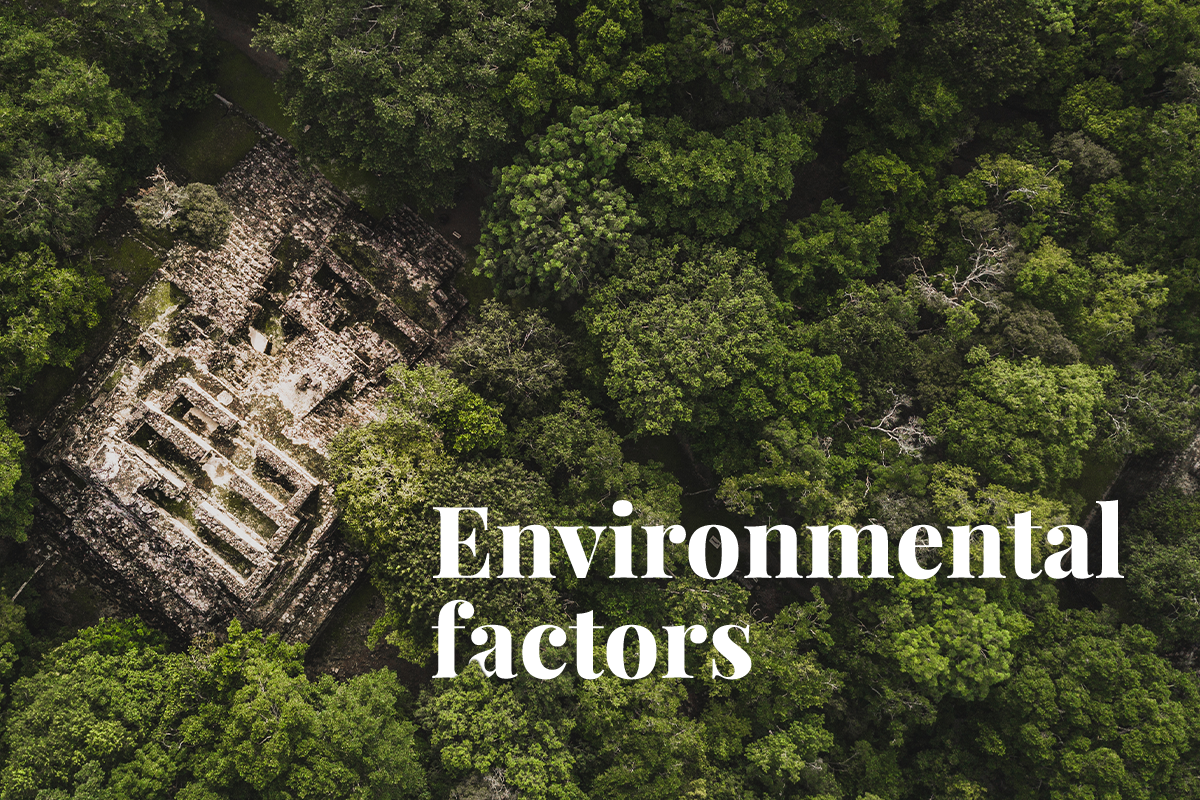The Maya civilisation is one of the most fascinating and complex ancient civilisations in history. Their achievements in architecture, mathematics, and astronomy have amazed researchers and scholars for centuries. However, the Maya civilisation also experienced a dramatic decline around 900 CE, which has been the subject of much debate among historians and archaeologists. Researchers have recently suggested that environmental factors may have played a significant role in the Maya's collapse.

Dependence on agriculture
The Maya civilisation was heavily dependent on agriculture, the main source of their food and livelihood. They cultivated crops such as maize, beans, and squash and relied on a sophisticated irrigation system to ensure adequate water supply for their crops. However, studies have shown that deforestation and soil erosion may have contributed to soil degradation, making it difficult for the Maya to maintain their agricultural system. As a result, crop failures, food shortages, and famine occurred, leading to social unrest and a weakened civilisation.
Deforestation
Deforestation was one of the major environmental factors that contributed to the Maya's collapse. The Maya cleared vast areas of forests to make way for agriculture and to build their cities. However, the removal of trees led to soil erosion, making it difficult for the Maya to maintain their agricultural system. Deforestation also led to a decline in biodiversity, which had a cascading effect on the ecosystem, making it less resilient to natural disasters.
Natural disasters
The Maya also faced a series of natural disasters, including hurricanes, droughts, and floods, making it difficult to recover from their other challenges. For example, hurricanes would have destroyed their crops and homes, while droughts and floods would have disrupted their irrigation system and caused crop failures. These natural disasters, combined with the effects of deforestation and soil degradation, weakened the Maya's ability to withstand outside attacks and further contributed to the civilisation's collapse.
Read more: Key factors in the fall of the Roman Empire: unsustainable farming practices and deforestation
Learning from the past: ensuring the long-term sustainability of our societies
In conclusion, the decline of the Maya civilisation was a complex process involving political, economic, and environmental factors. While the role of environmental factors, such as deforestation and natural disasters, has been debated, recent studies suggest that these factors played a significant role in the Maya's collapse.
The Maya's dependence on agriculture, coupled with their unsustainable farming practices and the impact of natural disasters, contributed to crop failures, food shortages, and social unrest, weakening the civilisation and making it vulnerable to outside attacks. By understanding the role of environmental factors in the Maya's collapse, we can learn from their mistakes and take steps to ensure the long-term sustainability and resilience of our societies.
Start your sustainability journey with DGB



